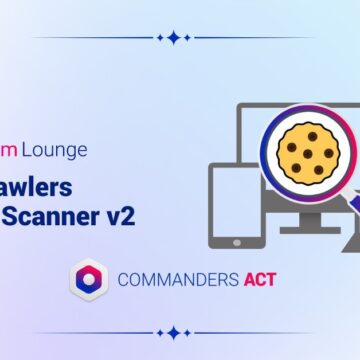End of free tracking: good news for the ecosystem?
04/04/2023 |

For clients and partners alike, it’s a cold shower: recent developments in Google tools (Analytics, Looker Studio, Tag Manager) lead to paying for what was previously free. Bad news? Not so sure…
A picture that you can only really understand if you take three steps back. This is the experience of many analytics managers as Google announces its solutions, from Google Analytics to Looker Studio to Google Tag Manager. A soap opera that raises several questions. Is this the end of free solutions? And, how to… bounce back?
To understand what is at stake, a summary of the episodes is necessary:
- Episode #1, Spring 2022 – Google announces the end of Google Universal Analytics (GA3) in favor of Google Analytics 4 (GA4) with a switchover date of July 1er 2023.
- Episode #2, October 2022 – At the Google Cloud Next’22 event a “rebranding” is announced: Data studio becomes Looker Studio, named after the company bought two years before. A “pro” version is announced, designed for large-scale teamwork. Quite logical. No one suspects at this time that the free version will see its field of action reduced…
- Episode #3, November 2022 – (Bad) surprise. Google announces a quota system that caps the consumption of GA4 data from its API. A complex scale of tokens is set up, per hour, per day, per type of tokens… A complexity that is however very simple in Looker Studio: even in simple dashboards, the widgets empty and an error message reminds the hard law of GA4 quotas.
Companies with their backs to the wall (of data)
For clients and their agencies, it’s a cold shower. And the race for alternatives. One is to switch to Google 360 Analytics or to dump GA4 data into BigQuery. And the companies concerned must act quickly, as the Looker Studio dashboards have been subjected to the GA4 API quotas overnight.
While this evolution has manifested itself in a very concrete way in the eyes of users – dashboards that bug in the middle of a meeting – it is part of a much broader movement. Because of its entrenchment in the Martech stacks, Google sees a lot of ink spilled over each of its decisions. But, let’s face it, Google is following the same movement as many publishers. A movement that has been going on for several years and that comes from two opposite forces…
Let’s summarize:
- On the one hand, everyone is now convinced that data is an essential commodity for good marketing management;
- On the other hand, the collection and exploitation of data have become much more complex and technical than they used to be.
Consent management (in the wake of the RGPD) as well as server-side mode switches (with the announced end of third-party cookies) require investments from publishers. On this subject, it should be noted that while the Google Tag Manager (GTM) interface is still free, server-side management requires the use of Google Cloud resources, which are not free. GTM, too, is migrating in practice – and since 2020 – to a paying model.
The end of free tracking solutions (tag management, analytics, dashboard, AB/Testing…) has been in sight for several years. The “shock” felt by customers and partners comes from the fact that, faced with technical and regulatory changes, publishers have had to invest and monetize their platforms faster than users and partners change their habits…
Questions from customers
It’s not surprising that these transitions are leading brands to question the risks that come with using free solutions. In other words, isn’t sticking to free solutions a risk that is out of proportion with the importance of data to drive marketing? Of course, commercial solutions are also subject to change. But as they are committed to their customers, their publishers must anticipate, report on and propose reasonable evolution scenarios.
This is not the first time that marketers have had to compare the benefits of free and commercial solutions. The deployment of CMPs (Consent Management Platforms) had given rise to this type of procrastination. Until the criticality of the issue (in the wake of the CNIL directives) led companies to opt for proven commercial solutions, with commitments at stake.
Opportunities for partners
Reflections are also intense on the partner side. The end of free solutions opens a window of opportunity for everyone to review their ecosystem and possibly build new relationships. For these partners – media agencies, communication agencies, data marketing firms – this new era also opens the opportunity to revalue their consulting services. In fact, a brand is much more likely to consume consulting to secure its investment in a paid solution than it is for a free solution. It’s all about ensuring the right deployment, the right usage and, ultimately, the ROI.
While the switch from free to paid services is more or less welcome, it is part of the evolution of an ecosystem that is now faced with more complex challenges. And they go hand in hand with the increasing use of data. Nothing fatal; just a natural maturation with, at the end of the day, some healthy and legitimate questions for everyone.










